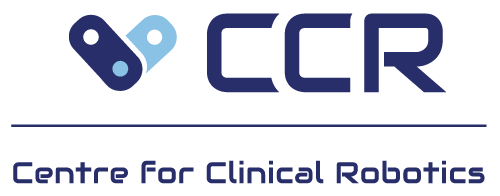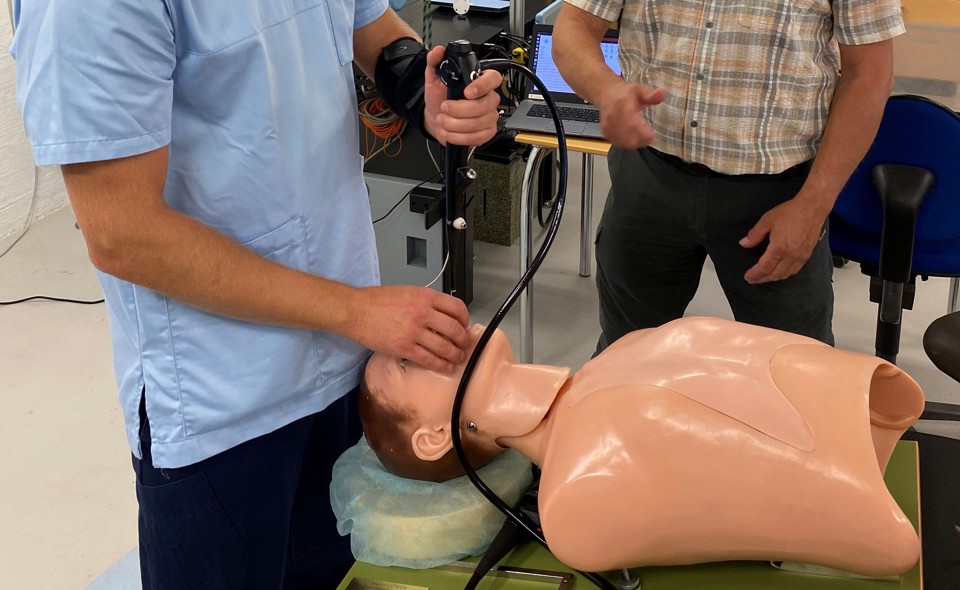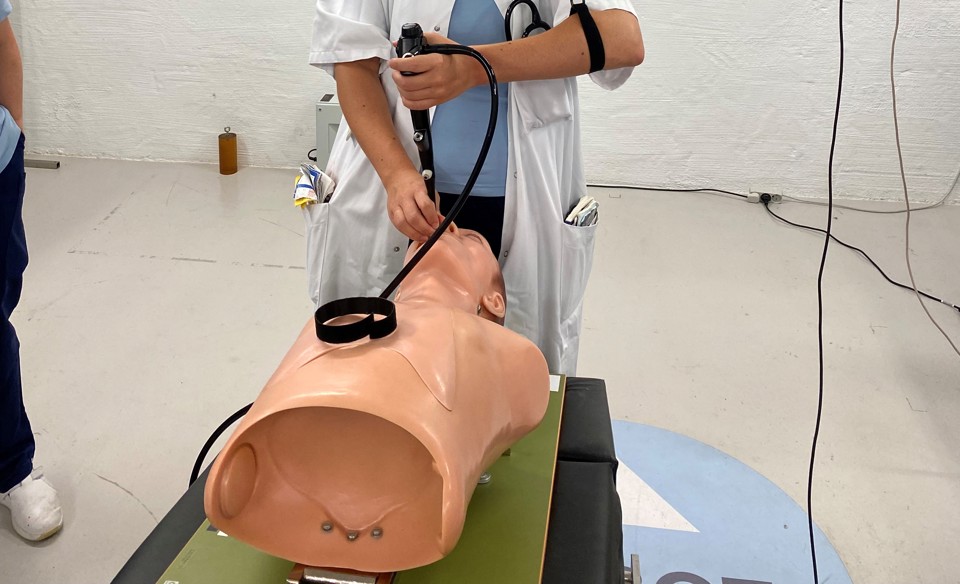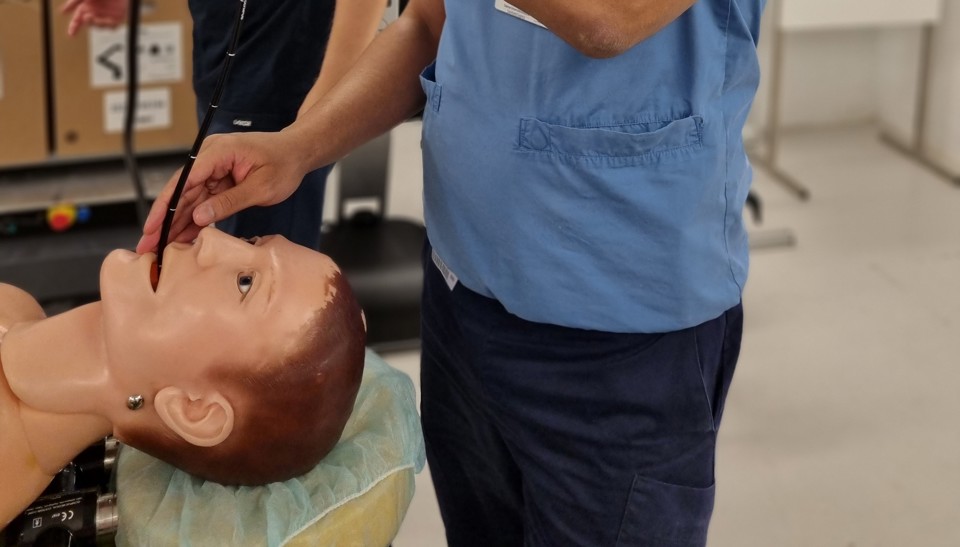CCR defies gravity
Last week, CCR, together with researchers and engineers from SDU and endoscopy technicians from several different departments at Odense University Hospital (OUH), tested robotic equipment that can almost defy gravity.
Being an endoscopy technician can be hard work. A quick bronchoscopy can be done in 5 minutes, but it can also drag on and take up to an hour and a half, forcing the technician to stand in the same position for a long time. Over time, this can cause serious strain on the arms, neck and shoulders.
In the project, a robot is tested which can relieve the endoscopy technician by relieving the weight on the arm and thereby avoid some of the musculoskeletal pain that technicians can experience. And it is in demand among the target group:
Arman Arshad, consultant at the Department of Respiratory Medicine at OUH, tested the equipment and commented: "I can use this in my everyday life, it can work well." For further development, he pointed out the need to be able to adapt the equipment to the individual technician, that it must be usable by all types of technicians, and that it must be easy to take on and off - also during the scoping.
"It is very valuable that the clinics set aside time to test equipment and prototypes. When we get their input early in the development process, we can adapt and present a much better solution than if we only develop based on our own assumptions", explains Malte Kongstad Deleuran, project manager for Augmented Gravity.
Interdisciplinary cooperation
The weight-relief robot is being developed in collaboration between the Department of Respiratory Medicine at OUH, robot researchers from the Mærsk Mc-Kinney Møller Institute at the University of Southern Denmark (SDU) and researchers from the Department of Sports Science and Clinical Biomechanics at SDU, who do research in working environments. CCR contributes with project management and evaluation.
Robotics researcher Anders Stengaard from SDU is responsible for the robotics part of the project. He explains: “We build on some technology we already have. In the field of robotics, the research is so far advanced, we have found out how to defy the force of gravity. But it is really interesting now to follow the research to the door, so that what we have researched can be used - also in the healthcare field. Interdisciplinarity means that we go beyond our own professional boundaries, and this is how we can move from idea to results".
And Arman Arshad predicts great demand from the bronchoscopists: "There hasn't been much research into how stressed bronchoscopists are in their work; there isn't a particularly big focus on our working environment, so there aren't that many people in the world who do something like this. We are onto something really innovative here”.
Read more
Endoscopy is a binocular examination to examine, for instance, the bladder, esophagus, intestines, airways, joints, etc. from within, and they are carried out in many clinical departments at OUH.
The Augmented Gravity project will develop, test and evaluate a prototype of the robot. The project is financed by funds from the internal Innovation Fund at OUH and the Otto Bruun Foundation. Funds have been sought from Beta.Health to create a minimum viable product, so that the prototype comes closer to a finished solution.



